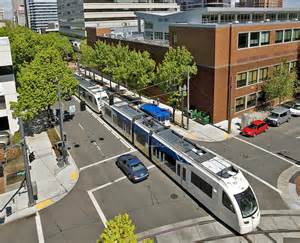Riding on the light rail train, from the airport to the city center, is a distinctly visual experience. The approximately 40-minute commute is through the middle class neighborhoods of NE Portland and it arrives eventually to the canyons of downtown.

It is also an experience that can be understood with more than the eyes. The sounds of the train, inside and outside the passenger cars, could be considered a primitive type of percussive composition or song. We can respond to these train songs with the whole of our bodies. We see & hear our surrounding environment and we touch & smell our surrounding travelers, at the very least. Instinctually our bodies absorb the physical vibrations, jerks, & locomotion of the train. This is a type of rhythmic accompaniment to our own internal bodily rhythms, that is, the beating of our hearts, our breathing process, and the subtler though continuous activities of all the major systems of our body; in all, there are 12 such systems within us.
World class percussionist, Evelyn Glennie, expands upon this concept in the biopic, ‘Touch the Sound’, a 2004 film documentary directed by Thomas Riedelsheimer. Ms. Glennie, who is profoundly hard-of hearing, relates her experience of feeling music through touch and through her body during concert performances and studio recordings. The film demonstrates her musical prowess despite her lack of hearing because she feels the music through her body.
■
Back to the light rail – our train continues its journey. There is an excess of 10 or more station stops before downtown. The train compartments begin to fill with the cadenced movement of people; people with sing-song voices.
Music and song. Scientific theories of Evolutionary Musicology posit that music & song might have existed as long ago as the first utterances of articulate human language. Some theories even suggest that song/music could be a type of proto-language or pre-linguistic contrivance. One could imagine that forms of humming or other smoothing sounds would communicate safety & well-being within the small community of early humans who lived in a hostile world. While other music/like utterances laced with a nervous tension might communicate a communal anxiety.
But today, people on the train, as am I, as it nears the city center, can likewise be heard humming or softly singing or innocuously mouthing lyrics. A young woman is tapping a syncopated beat, on her knee, with the palm of her hand. And all I can confirm is that the primitive music melodies & harmonies, which appeared to have started spontaneously while riding the train, seems to continue as the train arrives to downtown Portland near Pioneer Square.
■

Music archaeologists have postulated that the first primitive instruments, used by early humans, were the human voice, notably via humming, singing, whistling, and clicking sounds. Secondarily, implements for making percussive and/or rhythmic noises were used, such as, sticks, stones, pieces of animal bones, & clapping hands.
